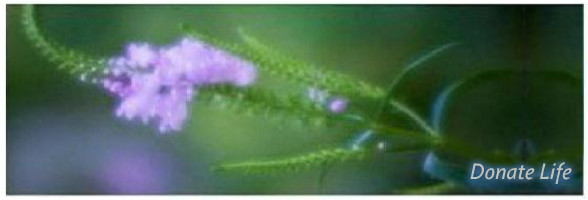
JIM SOLLISCH (Living Donor)
By Jim Sollisch
For about a month, I was a saint—at least in the eyes of the 130 people I work with. I definitely recommend the experience, as long as it doesn't drag on too long. You get hugs from all the women and nods of approval from the men.
So how did I become a saint, a word not often associated with anyone in the advertising business, let alone a creative director? I donated a kidney to a friend and fellow partner at MarcusThomas, the agency where we work.
The truth is that once you make the decision, the transplant itself is kind of easy. There are two days in the hospital, a week or two away from work, another few weeks without exercise, and that's about it. No long-term consequences (yes, I can still drink)—except a sense of happiness I didn't expect to feel.
So why did I do it? For the same reason I do a lot of things: because someone I know did it.
This is a common-enough experience. We are more likely to do things that people we know already have. You might not think about going to Thailand, but if a friend has, you'll be more likely to consider it. In the old days, it was called word-of-mouth. That was before you could tell everyone on Facebook, Twitter or Pinterest.
My friend, Paul Ernst, donated a kidney to a friend of his a couple of years ago. Paul is a lot like me, only better—more levelheaded, more generous, more easygoing—and I watched him go through the experience with ease and grace. So when one of my friends, Joanne Kim, needed a kidney, I thought, If Paul can do it, maybe I can do it.
Inner-city kids growing up in poverty aren't the only ones who need role models. Fifty-year-old college grads with good jobs need them too. We all need role models. Paul is one of mine.
And Joanne Kim is another. Joanne's tagline, if she had one, might be "No excuses." She's fearless, self-reliant and completely without self-pity. She's also one hell of a partner to have if you're in our business: creative, focused and cool under pressure.
Twenty years ago, physicians diagnosed Joanne with IgA nephropathy, a genetic disease, and told her she would eventually need a kidney transplant. I've worked with her for 12 years, but I didn't find out about her disease until two years ago when she was approaching 20% kidney function—the level at which you can be placed on the national kidney transplant list. Many people at our firm didn't find out she had kidney disease until we were at the Cleveland Clinic having the transplant. At that point, her kidney function had dropped to 7%; most people are put on dialysis at 10%.
So we had the transplant six weeks ago. And we woke up from surgery with a new relationship: something I would describe as being closer to a sibling than a friend. Joanne's kidney function a month after the operation was higher than mine: 63% to 53%. I'm told that my kidney function will eventually rise to 65%; all you need to be healthy is about 50%. This means most of us are walking around with a pretty impressive spare part.
It is a part that 90,000 people desperately need. That's the number of people on the national list, and every one of them has friends and family who could be donors.
So why don't more people step forward? Maybe they just need to know someone who's done it.
That's where I come in. Now you know (well, kind of know) someone who has done it. Now you know that donating a kidney is not that big a deal.
If a regular, middle-aged guy like me could do it, you probably could too. Here's something else you should know: It's not difficult to be a match. Essentially, if your blood type is compatible with the recipient's, there's a good chance you can donate a kidney to someone who needs it.
And the reward is very powerful. Besides the temporary sainthood, you get a tangible reminder (in the form of a small scar) that we humans come equipped with the means to affect the lives of those we love in so many ways.